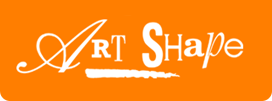Open Road Carnival Project

Open Road Carnival Project

Open Road is a national research and development project addressing the barriers disabled people face in accessing carnival. Partners are New Carnival Company (Isle of Wight), Together 2012! (London) and Callaloo Carnival Arts (nr. Huddersfield).
Art Shape’s research question, in association with Gloucester Carnival, is:
Does application of the (architectural / design) principles of ‘Universal Design’ positively impact on access to (and quality of disabled participants’ experience of) rehearsals, Mas Camp and/or carnival parade?
We are drawing on:
- the expertise of Universal Design of Instruction educator Jürg Koch. Click here to read his paper Find Your Own Pace and Move Together
- choreographic and dance training tools developed through the Dance Unstuck ballet project (2015- 17)
- learning from a carnival parade movement project in 2018.
What is Universal Design (UD) / Universal Design for Instruction (UDI)?
‘Universal Design is the design of products and environments to be usable by all people, to the greatest extent possible, without the need for adaptation or specialized design’
- Ron Mace, The Centre for Universal Design
Listen to the presentation below to hear Jürg Koch’s introduction to UDI for the 2020-21 Art Shape carnival team:
Further information on UD / UDI:
UD started at the NC State University College of Design, which is currently not active due to funding challenges. However, the website of the Centre for Excellence in Universal Design based in Ireland has useful links to general UD information:
Who is involved?
The collaborative team include disabled and non-disabled professionals and participants, including:
| - Professional dance collaborators Hearns Sebuado, Laura Dajao and Maiya Leeke |
|
- Inclusion / UD specialists Suzie Birchwood and Jürg Koch |
|
- Carnival specialist choreographer Manuela Benini |
|
- Costume Designer / Producer Harriet West, and Structure Maker Matthew West |
|
- Costume Mentor Ray Mahabir of Sunshine International Arts |
|
- Inclusive Arts Specialist / Production Mentor Cath Wilkins |
What we have done & what we have learnt so far:

Watch this film to see how we explored different movement possibilities and what we learnt in 2018:
Listen to this presentation by UD Mentor Jürg Koch to understand how we applied our understanding of use of UD tools in ballet to carnival:
Watch this film to see how we explored some of the UDI / Dance Unstuck tools with a diversity of participants in 2021:

Watch this film to hear how the costume / structure designers used UD principles in 2020/21:
Summary of learning to date:
It made a difference
- It was possible to create visually strong carnival group movement even though not everyone was doing exactly the same movement in the same way
- Professional and community performers learnt there are not just 2 ways of doing things (the disabled person’s way and the non-disabled person’s way): all can connect to the essence of the parade piece
- Using open language made a huge difference (e.g. travelling, not walking; using descriptive words like ‘twist’ rather than closed instructions)
- Using different tempos, timing and levels (and enabling some performers to opt out of certain movements or do them differently) created better access to the choreographic material
- Through working with a greater diversity of disabled participants, it created more universal access to others (e.g. older people, those with living with fatigue)
- It’s also helped in terms of thinking about re-use / sustainability.
- We now have structures / costume bases that can easily be reused by a diversity of participants
- It takes time to embed and practice a UD informed approach
- The whole artistic team and/or key community group leaders need disability awareness training at the outset
- Structured mentoring is needed initially for artistic lead(s)
- Artists felt they needed more practice / another project to become confident in its application
For the costume / structure design:
Production & Artistic Vision: lead-in time + time with the team and participants together is critical
- The time in 2020 to coach the team in the UD approach, explore artistic vision, characters, initial concepts, movements and structures online was invaluable
- Artistic Director overview is important, as well as having makers and performers in the same space – to ensure movements / costumes support each other
- Early preparation and plenty of lead-in time is vital – with all artists / participants together from the outset ideally
- More time was needed to set, rehearse and block choreography once the group had improvised into individualised versions and explored a cohesive group dynamic
- It is OK to keep just the essence of dance traditions we draw on to ensure the choreography is right for diverse performers in a carnival context
- It’s critical to apply the UD principles to event management too!
- If UD isn’t applied to Carnival itself, time spent by groups developing accessible parade material is wasted
- Ideally, place groups who need to control pace at the front of the parade
- Have different starting / joining points in the parade that may enable more people to take part / play a role
- Can carnival groups access the route in the lead-up to carnival day? It’s important to rehearse on the actual terrain (to decide how to manage inclines for example)
- Ensure stewards are specifically briefed and have disability awareness training





